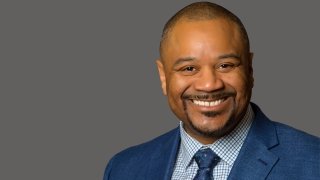Equity and inclusion have always been paramount to Merrill Irving Jr. EdD ’07, who leads Hennepin Technical College (HTC).
“Although I am the president, I am no different than our students. I was born to teenage parents and raised by a single mother who worked 12-hour shifts,” he says. “I am proudest when I see our students’ lives changed through the educational opportunities they receive from attending HTC—we have a 99 percent placement rate in their field of study.”
Ultimately, Irving finds, the value of technical education is best measured in the professional and personal success of his students.
WHAT IS THE MAKEUP OF THE HTC STUDENT BODY?
As the largest technical college in the state of Minnesota, HTC ranked 29th nationally for granting associate degrees for women and minorities in engineering technologies and engineering. Sixty-two percent of our students come from underrepresented populations, 44 percent are students of color and two-thirds are also working while completing their education.
HOW DOES TECH INFORM THE HTC EXPERIENCE?
We raise more than a million dollars in leveraged equipment to advance the work of our students using technology each year. We’ve also embarked upon professional development activities to increase the quality of pedagogy, curriculum and learning opportunities through online education. Technology rebalances the opportunity for students of diverse backgrounds to achieve and advance, and it is helping us transform education to be more readily available for students.
WHAT CHALLENGES EXIST WITH TECH AND EDUCATION?
Affordability and access. As funding gets cut from governmental entities, it increases the financial hardship that students have to carry. Also, while technology can assist in our efforts around diversity, equity and inclusion, we know students do not reach our campus in an equitable manner. They may not have access to the internet in their homes or they may lack the time and resources to learn new technology because they’re working multiple jobs or caring for children. It is our responsibility to support students and to be knowledgeable about their challenges. We must meet our students where they are.
HOW HAS EDUCATION CHANGED OVER YOUR CAREER?
Twenty-five years ago, most colleges and universities did not have to provide active shooter training; we didn’t have to worry about the safety of our students due to a terrorist threat. Today, safety is a priority and includes continuous professional development, training and readiness. The other big change is that student debt has exceeded credit card debt to threaten our country’s financial future. Our efforts to increase access and affordability are critical to the sustainability of higher education.
WHAT INFORMS YOUR PRESIDENTIAL PHILOSOPHY?
Accept who you are, especially the things that set you apart. I am the first president within the Minnesota State Colleges and Universities system to benefit from marriage equity. My spouse is of Cuban descent, and he is the first in his family to be born in the U.S. Many people would describe me as a nontraditional president: I take selfies with my students; I meet with them monthly to listen to their issues and concerns; I cheer them on daily. Remaining authentic and sticking to my values—trust, honesty and integrity—are the foundation of my life and career, and I hope by example to inspire my students to do the same.




